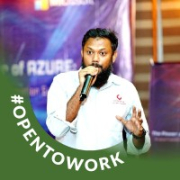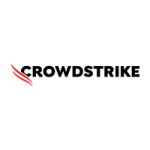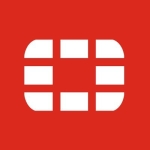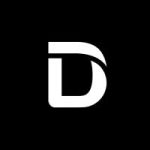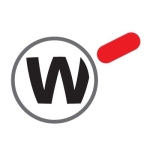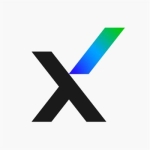Three years ago, we followed a different concept: two independent security solutions with separate management and reporting. Migrating to Vision One and consolidating everything into one interface gave us a 365° view of our IT infrastructure.
Central visibility of endpoints and vulnerabilities, as well asunified management, brought a new level of focus to IT security and boosted employee awareness.
If you're evaluating Trend Micro, don’t limit yourself to antivirus functionalities. Consider other features as well — especially the Managed Services, (strong technical support), and Cyber Risk Exposure Management capabilities, which I find highly valuable.
Create a centralized view of your IT infrastructure.
Define which features are important or necessary for you.
Get a comprehensive overview when evaluating different security vendors in terms of features and costs — so you’re not comparing apples to oranges.
Foreign Language: (German)
Ermöglicht Teams, Cyberrisiken schnell zu erkennen und zu managen – durch detaillierte Einblicke und kontinuierliche Unterstützung
Was ist unser primärer Anwendungsfall?
Trend Vision One kommt als primäre Sicherheitslösung auf allen Endpunkten (Server und Clients) in unserer Umgebung zum Einsatz. Darüber hinaus sind über die Third-Party Integration auch die von uns eingesetzten Lösungen weiterer Hersteller (u. a. VMware, Fortinet) eingebunden.
Wie hat es meiner Organisation geholfen?
Trend Vision One hat uns geholfen, die Sichtbarkeit der Endpunkte zu erhöhen und den Angriffsvektor zu verringern. Wir können schneller Schwachstellen/Bedrohungen identifizieren und darauf reagieren. Dadurch konnte unsere Reaktionszeit um schätzungsweise fünfundzwanzig bis dreißig Prozent gesenkt werden. Mit Vision One wird man über konkrete Risiken benachrichtigt und lernt, wo die Risiken im Allgemeinen liegen. So kann man aktiv daran arbeiten, diese zu beheben.
Früher mussten wir aus eigener Initiative heraus überprüfen, welche Schwachstellen bei bestimmten Herstellern bestehen und einschätzen, ob diese Schwachstellen für uns relevant sind. Das wird jetzt bereits zu einem großen Teil von Vision One erledigt. Herunter gebrochen bis auf jeden einzelnen Benutzer und Endpunkt wird dediziert angegeben, welche Risiken bestehen und wie diese verringert werden können.
Ich vergleiche die Behebung von Schwachstellen im Cyber Risk Exposure Management (CREM) mit einem umgekehrten Spiel. Es geht darum, so wenige Punkte wie möglich zu sammeln. Je niedriger unser Score ist, desto sicherer ist die Umgebung. Und wie im echten Leben gibt es Höhen und Tiefen, weil es täglich neue Risiken gibt.
Letztendlich ist Vision One ein wichtiges Tool, um einerseits eine allgemeine Risikobewertung für Führungskräfte/ Manager durchzuführen, und andererseits für operative Mitarbeiter, um zu wissen, was dieses Risiko tatsächlich beinhaltet und wie es sich reduzieren lässt.
Was ist am wertvollsten?
Die Funktion, die ich in Trend Vision One besonders wertvoll finde, ist Cyber Risk Exposure Management (CREM). CREM hilft unserem Unternehmen, blinde Flecken zu identifizieren. Diese wichtige Funktion zeigt sehr detailliert und umfassend auf, wo Handlungsbedarf oder Verbesserungspotenzial besteht. Gleichzeitig bietet es den Kollegen konkrete Handlungsempfehlungen, wie Schwachstellen geschlossen werden können.
Ein Bestandteil unseres Service One Complete Service-Vertrages sind zwei wöchentliche Meetings mit einem TAM (Technical Account Manager), der uns berät, wo Verbesserungspotenzial bei den Sicherheitseinstellungen besteht und uns regelmäßig – auch zwischen den Meetings – informiert, wenn es neue Angriffsszenarien gibt und wie diesen entgegengewirkt werden kann.
Was muss verbessert werden?
Bereiche, in denen Vision One verbessert werden könnte oder wo zusätzliche Funktionen erforderlich sind, sind schwer zu bestimmen. Ich arbeite jetzt seit drei Jahren mit der Lösung und Trend Micro arbeitet ständig an deren Weiterentwicklung. Stellenweise ist man gar nicht in der Lage, alle Änderungen zu erfassen oder welche zusätzlichen Funktionen eingebunden werden.
Ich glaube, Trend Micro ist derzeit schneller dabei, meine Bedürfnisse zu identifizieren, als ich sie überhaupt selbst erkenne.
Wie lange verwende ich die Lösung bereits?
Vision One ist seit drei Jahren im Unternehmen im Einsatz.
Was denke ich über die Stabilität der Lösung?
Die Stabilität der Lösung ist sehr gut. Meiner Meinung nach sind Leistung und Verfügbarkeit sehr gut.
Was denke ich über die Skalierbarkeit der Lösung?
Die Skalierbarkeit der Lösung ist sehr gut. Wir sind bisher auf keine Einschränkungen beim Wachstum unserer Umgebung gestoßen.
Wie sind Kundendienst und Support?
Ich würde die Erreichbarkeit und Kompetenz von Service und Support von Trend Micro als sehr hoch bewerten, ich bin sehr zufrieden. Antworten und Lösungen kommen prompt, das Personal ist professionell und auf einem sehr hohen Kommunikationsniveau.
Wie würden Sie Kundendienst und Support bewerten?
Äußerst positiv. Kundendienst und Support reagieren zeitnah. Gemeinsam konnten bisher alle Herausforderungen unseres Tagesgeschäftes gelöst werden.Auf einer Skala von eins bis zehn würde ich den Kundendienst und den technischen Support für Trend Vision One mit einer Neun bewerten. Es muss ja noch Luft nach oben bleiben.
Welche Lösung habe ich vorher verwendet und warum bin ich gewechselt?
Vor Trendmicro Vision One war die Lösung von Kaspersky im Einsatz. Der Auslöser für den Wechsel war die vom BSI ausgesprochene Sicherheitswarnung vor den Virenschutzprodukten des Herstellers.
Wie war die anfängliche Einrichtung?
An der Einführung und Bereitstellung der Lösung war ich maßgeblich beteiligt. Die Implementierung erfolgte relativ schnell und problemlos mit einem Deployment-Skript, welches über das Software-Verteilungssystem auf die Endpunkte gebracht wurde.
Unsere Implementierungsstrategie sah vor, dass zunächst eine kleine Anzahl von Endpunkten mit Virenschutz und Richtlinien versorgt wurde. Dann wurden die Richtlinien noch einmal überprüft und verfeinert. Abschließend wurde Vision One in mehreren Etappen auf die restlichen Endpunkte ausgerollt.
Wie war unser ROI?
Die Investition in Trend Micro Vision One hat sich rentiert, aber der ROI ist schwer zu berechnen. Eine Sicherheitslösung ist wie eine gute Versicherung, die man hoffentlich nicht braucht. Wir hatten bisher keine Vorfälle und hoffen natürlich, dass wir auch in Zukunft keine haben werden.
Ich stelle fest, dass unsere Umgebung durch die permanente Sichtbarkeit von potentiellen Risiken sicherer geworden ist und dass die Kollegen schneller auf diese reagieren können. Das spart vor allem Arbeitszeit.
Welche anderen Lösungen habe ich evaluiert?
Bevor wir uns für Vision One entschieden haben, haben wir auch die Lösungen anderer Hersteller evaluiert, unter anderem die von Microsoft und Fortinet. Die Unterschiede bei den jeweiligen Produkten waren nicht so gravierend, sie lagen mehr im Detail. Aber da wir auch schon seit fünfzehn Jahren Trend Micro Partner sind (zwölf Jahre davon ruhend), sind wir schließlich wieder zu Trend Micro zurückgekehrt.
Welche anderen Ratschläge habe ich?
Wir hatten vor drei Jahren ein Konzept, das einen anderen Ansatz verfolgte. Zwei voneinander unabhängige Sicherheitslösungen, mit jeweils eigenem Management und Reporting. Die Migration zu Vision One mit der Konsolidierung in eine Oberfläche hat zu einer 365°-Sicht auf die IT-Infrastruktur geführt.
Die zentrale Sichtbarkeit von Endpunkten und Schwachstellen und das Management über alle Ebenen hinweg hat noch einmal einen ganz anderen Fokus auf das Thema IT-Sicherheit gelegt und das Bewusstsein der Mitarbeiter für dieses Thema gestärkt.
Wenn Sie Trend Micro evaluieren, beschränken Sie sich bitte nicht nur auf den reinen Virenschutz, sondern beziehen Sie auch die anderen Funktionen in die Betrachtung ein. Insbesondere die Managed Services, der Technical Account Manager und die Cyber Risk Exposure Management Funktionen haben für mich einen hohen Mehrwert.
Schaffen Sie eine zentralisierte Sicht auf Ihre IT-Infrastruktur.
Definieren Sie im Vorfeld, welche Funktionen für Sie wichtig sind bzw. Sie benötigen.
Verschaffen Sie sich einen umfassenden Überblick bei der Evaluierung verschiedener Sicherheitsanbieter hinsichtlich Funktionen und Kosten, damit Sie nicht Äpfel mit Birnen vergleichen.
Welches Bereitstellungsmodell verwenden Sie für diese Lösung?
Private Cloud
Falls öffentliche Cloud, private Cloud oder Hybrid-Cloud, welchen Cloud-Anbieter verwenden Sie?
Verschiedene.





